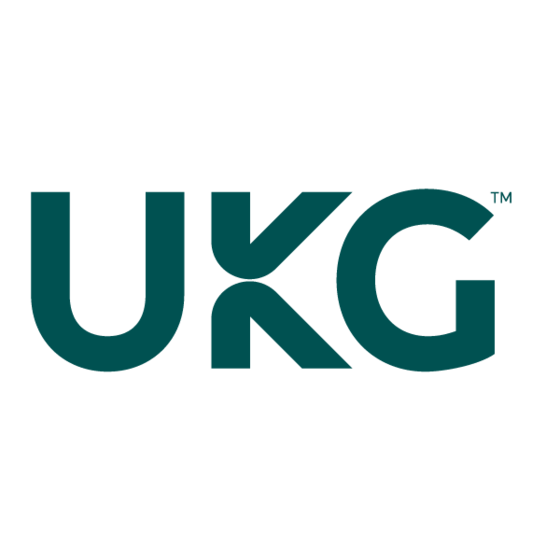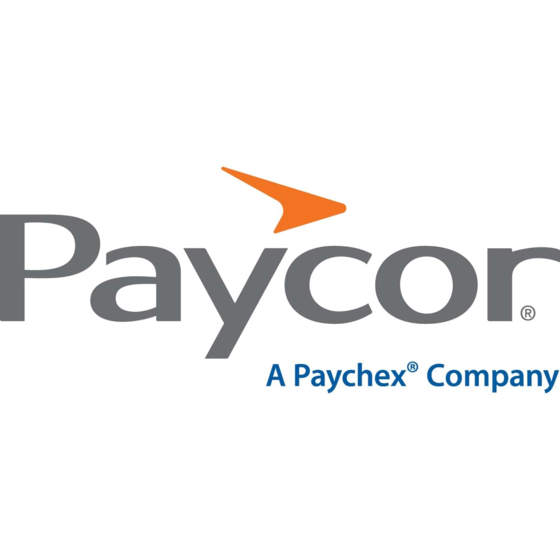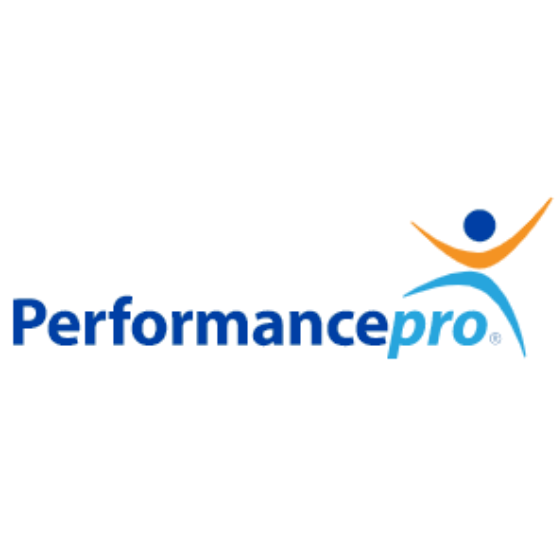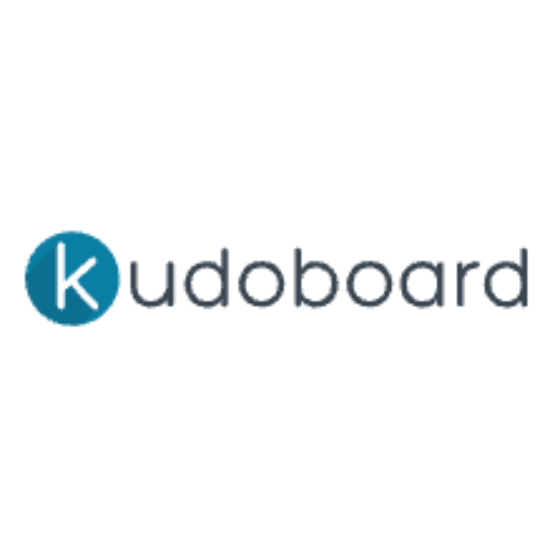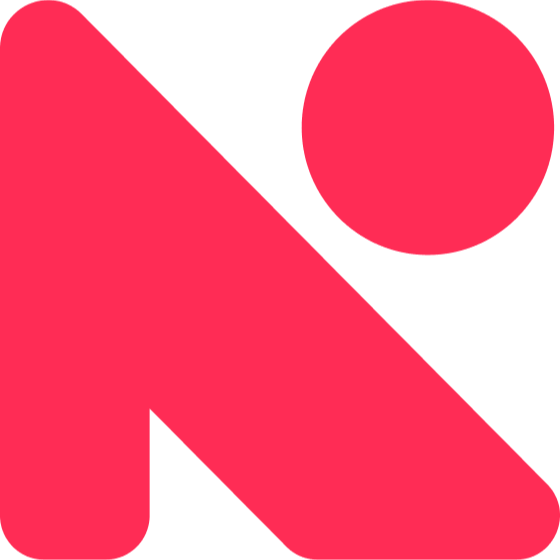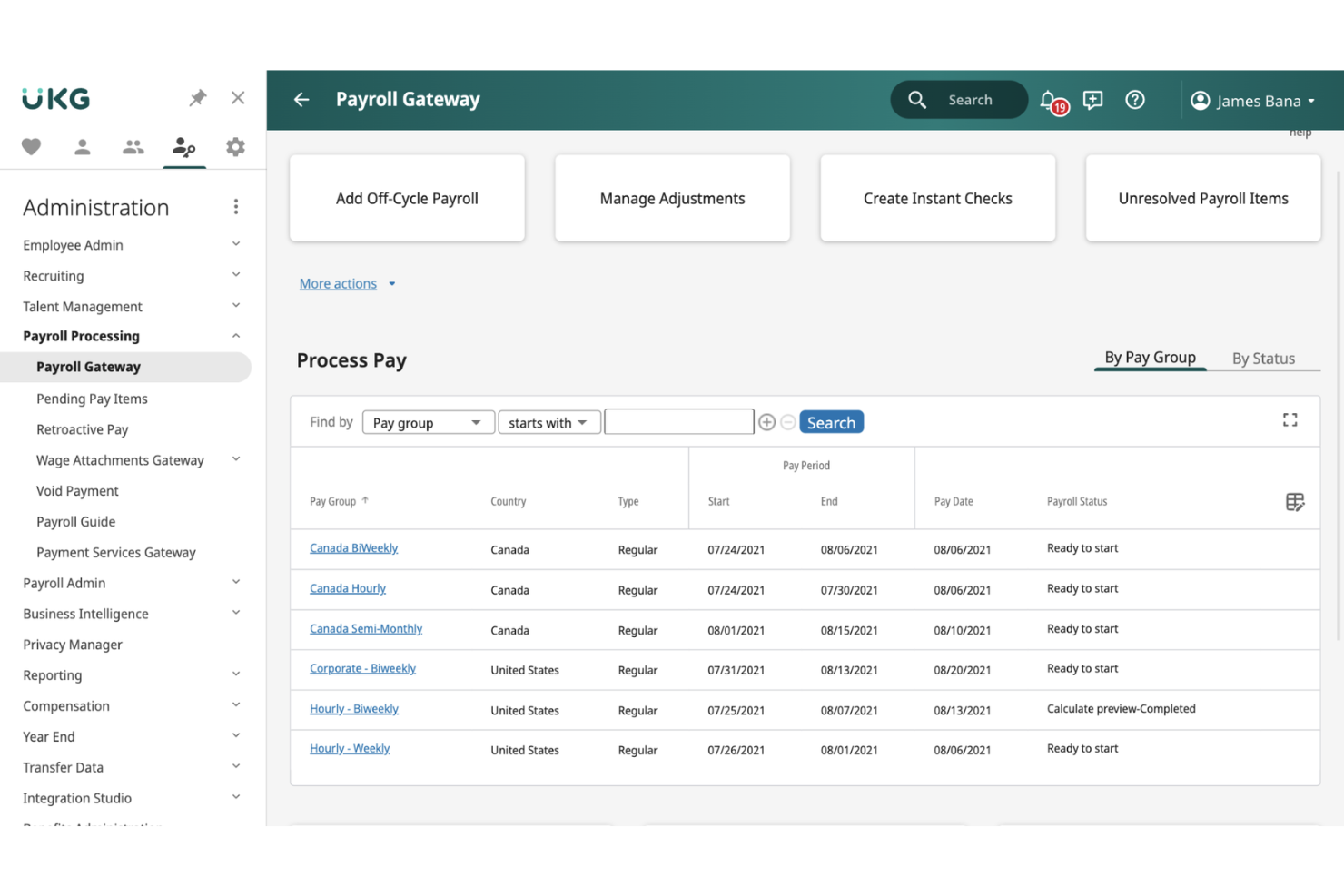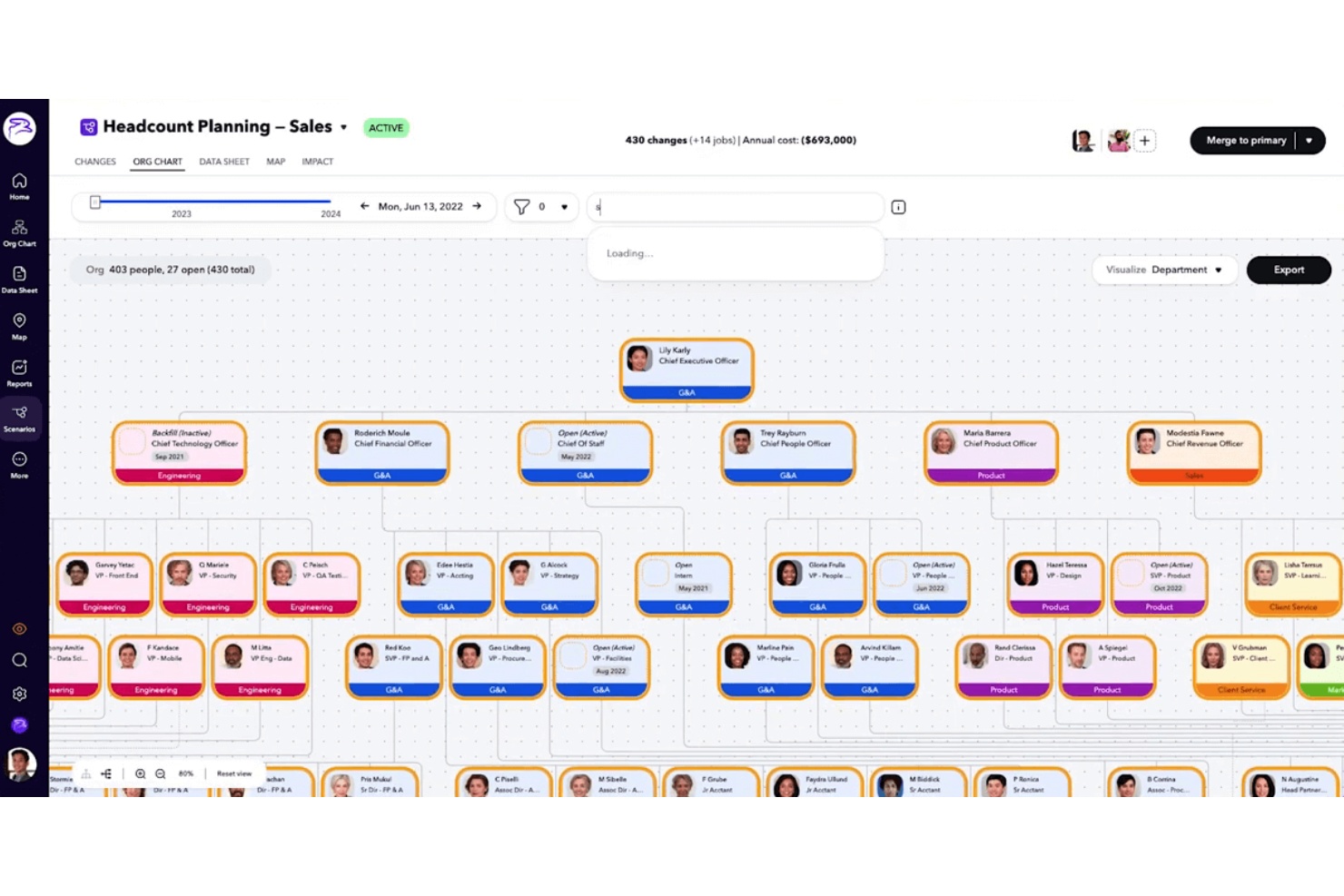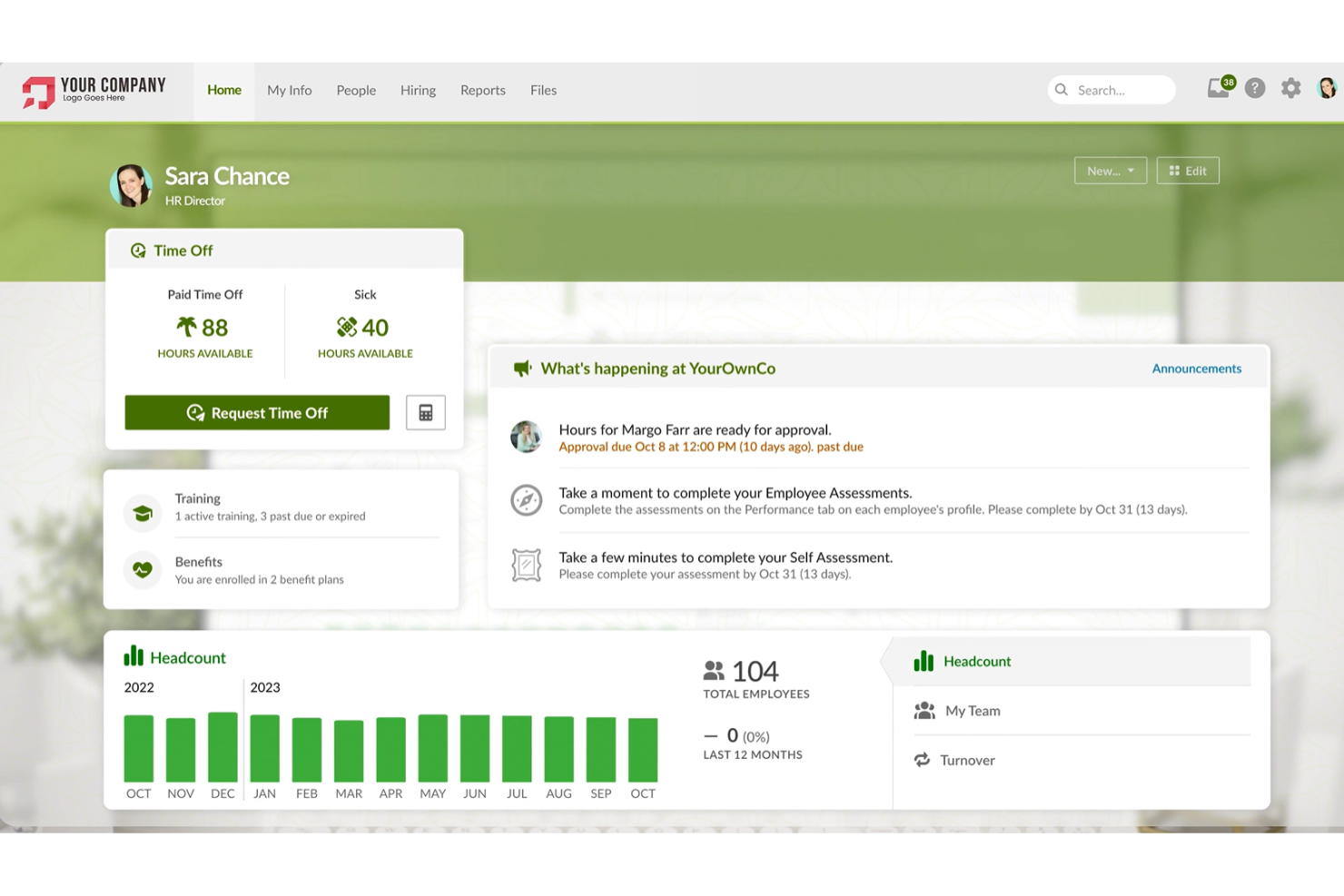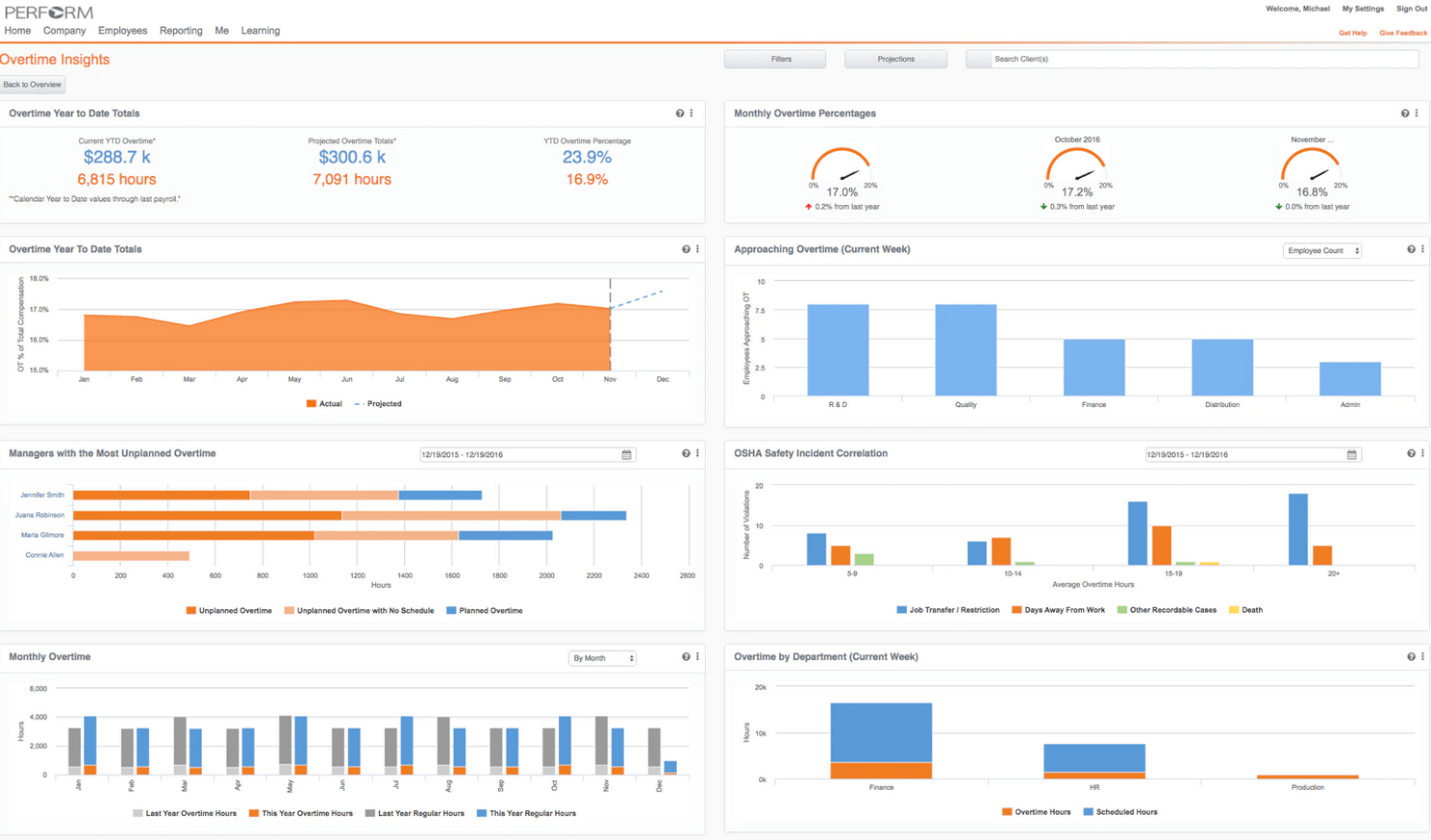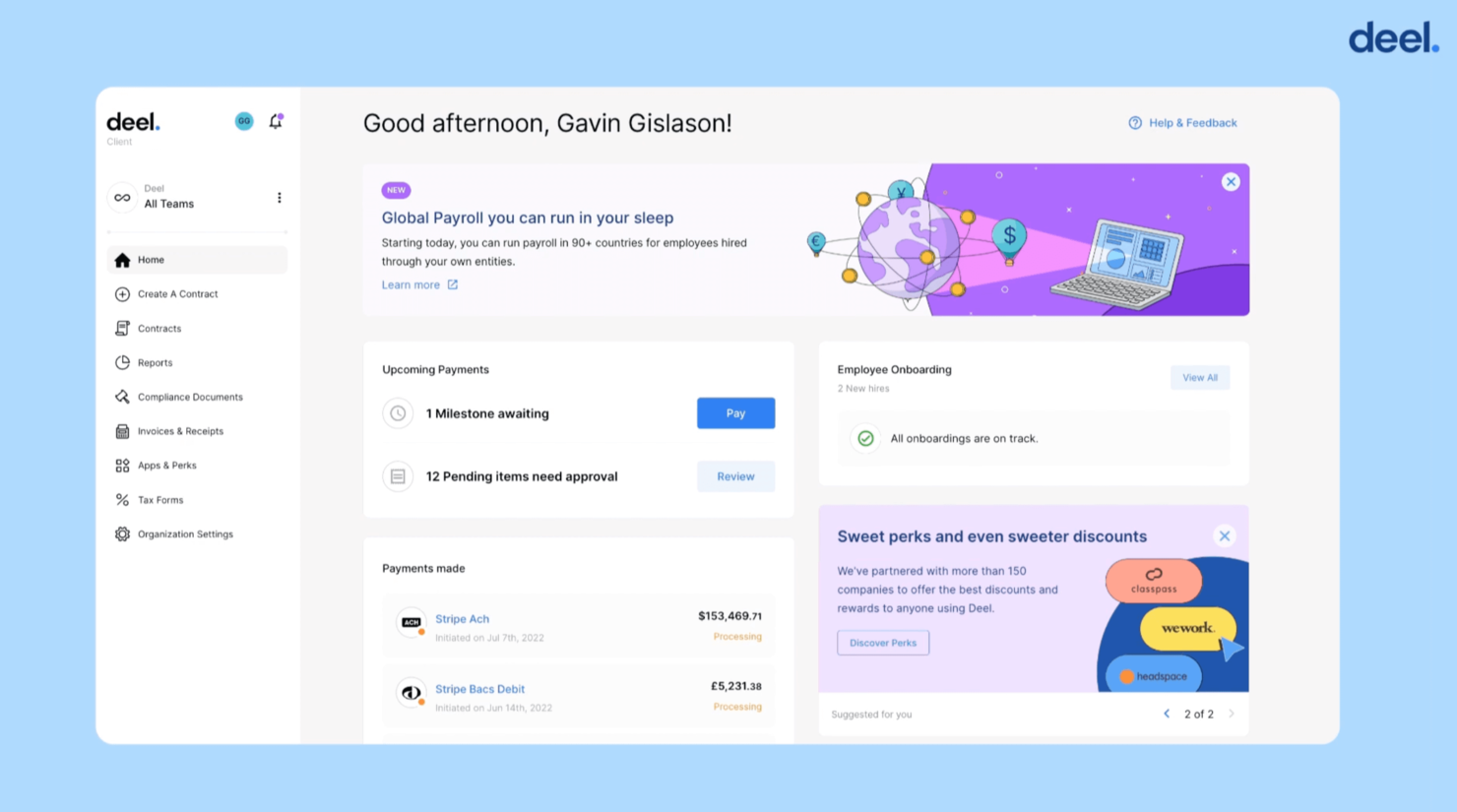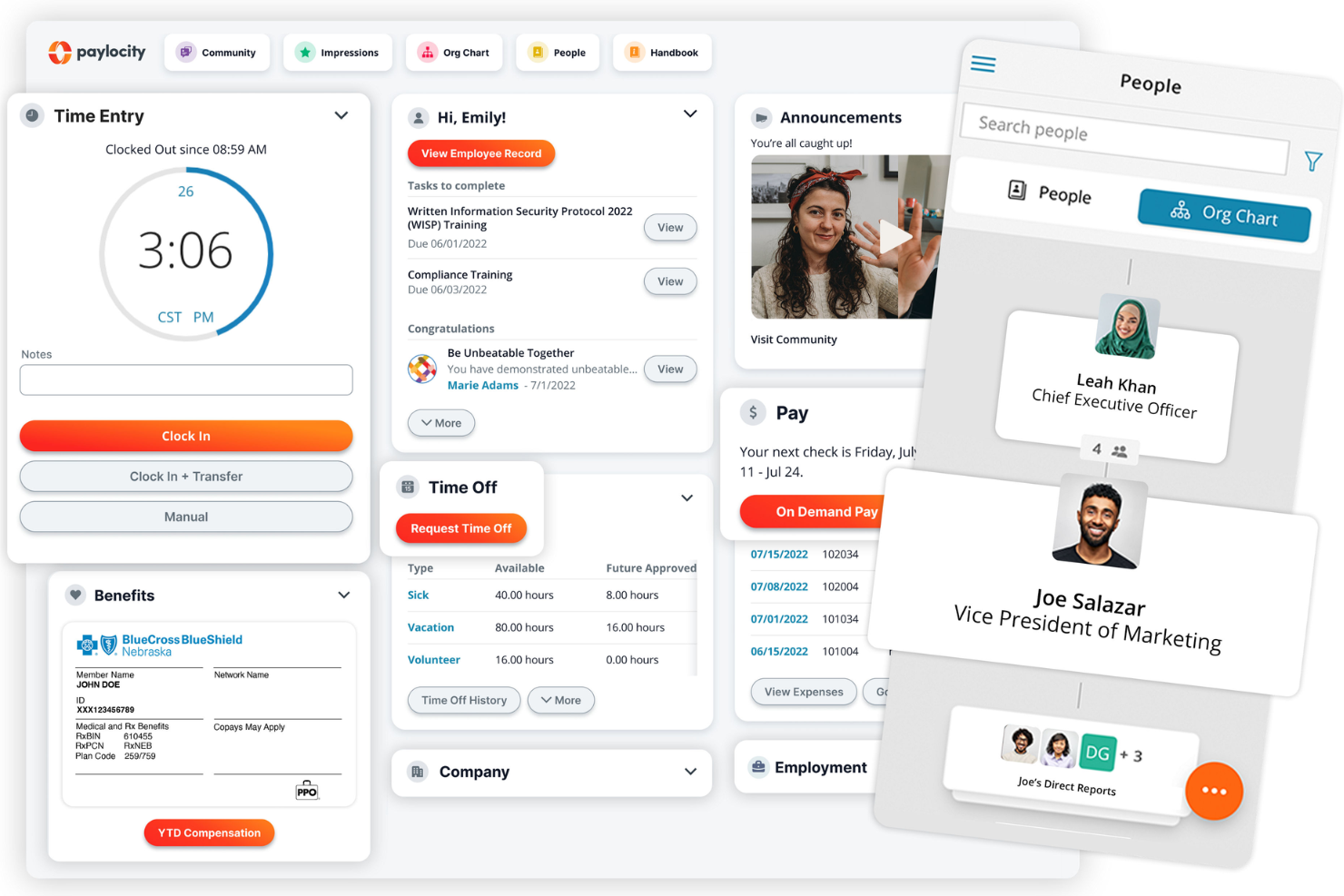10 Best HR Software Shortlist
Here's my pick of the 10 best software from the 40 tools reviewed.
The best HR software helps you centralize employee data, automate repetitive tasks, reduce manual errors, and give your HR team the breathing room they need to focus on strategic work like engagement, performance, and retention. If you're tired of juggling spreadsheets, navigating clunky interfaces, or stitching together disconnected tools, you're not alone—and you're in the right place.
Whether your current solution isn’t scaling with your team or you're still managing everything manually, this guide will help you find an HR system that fits. From recruitment and onboarding to time tracking, payroll, compliance, and performance management, the right HR software brings it all together in one streamlined platform.
As a former HR administrator for nine years, I’ve been in your shoes—managing HR manually and feeling overwhelmed by software that overpromises and underdelivers. That’s why I’ve put this guide together: to help you cut through the noise and confidently choose software that actually works for your people, your process, and your priorities.
You Can Trust Our HR Software Reviews
We've been testing and reviewing HR software solutions since 2019. As HR professionals ourselves, we know how critical and difficult it is to make the right decision when selecting software.
We invest in deep research to help our audience make better software purchasing decisions. We've tested more than 2,000 tools for different HR use cases and written over 1,000 comprehensive software reviews. Learn how we stay transparent, and take a look at our software review methodology.
Best HR Management Software: Comparison Chart
This HR software comparison chart summarizes pricing, trial, and demo details for my top HR software selections to help you find the best HR system for your budget and business needs.
| Tool | Best For | Trial Info | Price | ||
|---|---|---|---|---|---|
| 1 | Best for integrated IT functions | Free demo available | From $8/user/month (billed annually) | Website | |
| 2 | Best for AI-powered workforce insights | Free demo available | Pricing upon request | Website | |
| 3 | Best for customizable people data management | Free demo + free plan available | From $8/user/month | Website | |
| 4 | Best for customizable HR service desks | 7-day free trial | From $20/user/month (billed annually) | Website | |
| 5 | Best for advanced reporting and analytics | 7-day free trial | From $6.19/user/month (billed annually) | Website | |
| 6 | Best for payroll across niche industries | 30-day free trial | Pricing upon request | Website | |
| 7 | Best for employee performance management | Free demo available | From $2 to $7/employee/month | Website | |
| 8 | Best for global hiring compliance | Free trial + demo available | From $29/month | Website | |
| 9 | Best for multi-country payroll compliance | Free demo available | Pricing upon request | Website | |
| 10 | Best for employee experience and integrations | Free demo available | Pricing upon request | Website |
-

Rippling
Visit WebsiteThis is an aggregated rating for this tool including ratings from Crozdesk users and ratings from other sites.4.8 -

Kudoboard
Visit WebsiteThis is an aggregated rating for this tool including ratings from Crozdesk users and ratings from other sites.4.8 -

Native Teams
Visit WebsiteThis is an aggregated rating for this tool including ratings from Crozdesk users and ratings from other sites.4.9
Best HR Software Reviews
Explore my in-depth reviews of the top HR management software solutions that earned a spot on this list. I break down why each tool stood out, highlight standout features, weigh the pros and cons, and outline ideal use cases—so you can quickly pinpoint the right fit for your team.
Rippling is a unique solution that combines HR and IT management by letting you manage your employees’ payroll, benefits, devices, and apps in one system.
Their software includes all the core HR basics: payroll & expense management, employee benefits enrollment, time & attendance, talent management, pulse surveys, onboarding & offboarding, and asset & inventory management. In addition, Rippling has a built-in applicant tracking system and learning management system as well.
Why I picked Rippling: Their software stands out because they built app and device management (basic IT) into their HR platform, which is appropriate for the modern, online, all-digital workforce. You can remotely manage and protect employees’ devices (laptops, smartphones, tablets) as well as easily manage workforce apps like Google Workspace, Slack, and Office 365.
It's an ideal system for companies with limited resources who still want to provide their employees with top-notch service as it saves time by automating many tasks that would otherwise take hours to complete manually.
Rippling Standout Features & Integrations:
Features include an integrated HRIS system, recruiting tools, employee scheduling, time and attendance, benefits administration, employee surveys, and learning management tools.
Rippling also offers a fully automated onboarding and offboarding processes, giving businesses an easy way to manage these traditionally paper-heavy processes. You can easily customize forms to match your company's brand, store documents securely in the cloud, and automatically sync data across multiple departments, so everyone is updated on new hires automatically.
Their reporting capabilities also allow you to analyze key metrics across all their integrated modules, including performance, employee satisfaction, employee engagement, or turnover rates. These reports can give you valuable insight into what’s working well within your organization, while also uncovering any areas for improvement.
Integrations are available with 1Password, Asana, DocuSign, Dropbox, GitHub, Google Workspace, LinkedIn, Microsoft 365, Netsuite, Sage Intacct, Slack, Typeform, QuickBooks, and many other popular software systems.
Pros and cons
Pros:
- Helpful automations to streamline your onboarding process for new hires
- Includes a very useful headcount planning tool
- Automatically highlights possible data errors
Cons:
- Some users have reported issues with non-Chrome browsers
- Mobile app lacks some features that are available on the desktop and browser versions
New Product Updates from Rippling
Rippling Now Integrates with Points North
Rippling's new integration with Points North automates certified payroll reporting, ensuring compliance with Davis-Bacon and prevailing-wage laws by synchronizing data in real time and reducing manual errors. More details at Rippling Blog.
UKG is a human resources and workforce management platform that combines human capital management, workforce management, and global payroll tools in one system. It’s designed for organizations of all sizes looking to manage HR tasks, improve compliance, and foster a positive workplace culture.
Jesse Ajebon, Founder & CEO at People Street, highlights one of the platform’s key strengths: “UKG offers great flexibility with integrations, and their data transfer is seamless compared to smaller platforms.”
Why I picked UKG: I chose UKG for its breadth of HR capabilities and its use of AI to support decision-making. Through its flagship products, UKG Pro and UKG Ready, you can manage payroll, scheduling, and employee records in a centralized hub. The platform’s AI-powered insights help identify workforce trends and opportunities to boost engagement, while compliance tools reduce risks tied to labor regulations.
I also appreciate UKG’s focus on workplace culture. Beyond day-to-day HR functions, it offers resources, events, and networking opportunities that encourage connection and professional growth across your team.
UKG standout features & integrations:
Features include AI-powered analytics for workforce planning, compliance management tools that adapt to regional labor laws, and mobile self-service options so employees can manage tasks like scheduling and benefits from anywhere.
UKG also offers workplace culture resources through events, webinars, and its People Purpose Blog.
Integrations include ADP, BambooHR, Oracle HCM, Salesforce, Workday, Greenhouse, JazzHR, Jobvite, Lever, SAP, ServiceNow, and SmartRecruiters.
Pros and cons
Pros:
- Strong compliance support for multi-region operations
- AI-powered insights for engagement and planning
- Wide range of HR, payroll, and workforce tools
Cons:
- No pricing mentioned
- Implementation may be complex for new teams
ChartHop is a data-driven HR platform designed to simplify workforce planning and centralize employee data. It helps organizations visualize their people operations, making it easier to manage employee information, compensation cycles, headcount planning, and performance—all in one place.
Why I picked ChartHop: I included ChartHop because of its highly visual, interactive org charts that make it easy for you to understand your company's structure, reporting lines, and employee distribution at a glance. Unlike traditional HR systems, ChartHop combines these charts with rich employee profiles, allowing you to quickly access compensation, job history, and time-off data directly from the visual map.
Another reason I like ChartHop is its robust headcount planning tools. You can collaborate with team leads to forecast growth, model workforce changes, and align hiring plans to business goals. This makes it easier to make strategic decisions and prepare for future organizational shifts.
I also appreciate ChartHop's compensation review capabilities, which allow you to securely manage salary adjustments while maintaining privacy and encouraging equitable pay practices. The system also supports employee engagement with ad-hoc feedback tools and survey analysis powered by AI.
ChartHop Standout Features & Integrations:
Features that makes this HR platform stand out is its AI-powered data summaries, which automatically surface key workforce trends and insights without the need for complex manual reporting. This gives you real-time visibility into people metrics that matter most.
Another valuable feature is ChartHop’s seamless integration with popular payroll and HR systems, enabling two-way data syncs that keep employee records current across platforms. ChartHop also supports time-off management, onboarding workflows, and centralized employee resource pages.
Integrations are available with ADP, BambooHR, Gusto, Greenhouse, Lever, Paylocity, QuickBooks, Workday, SAP SuccessFactors, Xero, and Namely, among others. ChartHop also offers an Open API for building custom connections to other software.
Pros and cons
Pros:
- Detailed employee profiles with role-based permissions
- AI-powered dashboards for fast, visual insights
- Supports equitable compensation and headcount planning
Cons:
- Advanced features like performance management require additional modules
- Steep price point of the minimum contract may limit accessibility for small teams
Jira Service Management is a service desk platform designed to help teams (including HR teams and others) manage requests, incidents, and changes efficiently. It offers customizable workflows and automation that can help organizations streamline numerous internal HR processes.
Why I picked Jira Service Management: You can customize your help center, providing employees with a single, intuitive place to get the HR support they need. This hub can include announcements, knowledge base articles, and request intake forms, enabling you to share information effectively and handle sensitive cases with care.
Automation and AI capabilities, such as virtual service agents, handle repetitive tasks by managing frequently asked questions, HR workflows, and efficiently routing requests. The platform also integrates with communication tools like Slack and Microsoft Teams, centralizing HR requests from various channels.
Jira Service Management Standout Features & Integrations
Features include out-of-the-box templates to quickly set up your HR service desk, AI-powered request intake forms, and configurable workflows and reports without the need for coding. This means you can update and maintain your HR service desk independently, without relying on IT support.
The software also provides a unified view of all service tickets (be they for HR, IT, or other internal processes), making it a particularly useful platform for enterprise organizations or other large-scale businesses.
Integrations include Microsoft Teams, Slack, Zendesk, Freshdesk, ServiceNow, Twilio, Jenkins, Dynatrace, and GitHub.
Pros and cons
Pros:
- Access to a virtual service agent
- Automation features reduce repetitive tasks
- Customizable workflows enhance HR processes
Cons:
- Limited advanced reporting capabilities
- Platform customization may take time
New Product Updates from Jira Service Management
Jira Service Management Enables On-Call Notifications in Slack
Jira Service Management now supports on-call schedule change notifications via Slack through the ChatOps app, allowing teams to receive real-time updates about on-call status changes. More details can be found at Atlassian.
BambooHR is a comprehensive HR software designed to enhance HR processes for small to medium-sized businesses. It provides a centralized platform for managing various HR tasks, including tracking hours worked, benefits administration, payroll management, and employee data management.
For Josh Barker, Talent Acquisition Manager at Black & White Zebra, the platform has been especially valuable for onboarding and communication: “BambooHR made my life easier because of its automation and reminder notification functionalities that meant that we could basically automate a bunch of reminders and messages and build a proper cadence with new hires.”
Why I picked BambooHR: I included BambooHR because of its exceptional focus on employee experience and engagement. The platform’s employee self-service feature allows employees to manage their personal information, request time off, and access important documents without relying on HR teams.
Another reason BambooHR stands out is its advanced reporting and analytics capabilities. It provides customizable reports that allow HR teams to track key metrics, such as employee turnover, retention, and headcount.
BambooHR Standout Features & Integrations:
Features include an HR database with advanced reporting features, hiring and onboarding tools, time off and benefits tracking, and employee experience tools, plus optional add-ons for payroll, time tracking, and benefits administration.
The integrated applicant tracking system (ATS) enhances the recruitment process by helping HR teams post job openings, track applicants, and manage candidate communications within the same platform.
In addition, the software also includes performance management tools that help organizations streamline employee evaluations with built-in goal setting, self-assessments, and manager feedback.
Integrations include Gusto, Slack, Zapier, QuickBooks, Xero, Namely, Workable, and Greenhouse.
Pros and cons
Pros:
- Mobile app available
- Easy-to-use interface
- Offers a wide range of HR functionalities
Cons:
- Benefits administration only available to US-based employees
- Could offer better customization options
New Product Updates from BambooHR®
BambooHR Carrier Status Bar and Salary Proration Enhancements
BambooHR rolled out two updates to boost efficiency and accuracy. You can now track your carrier connection at a glance and let BambooHR handle salary proration for unpaid time off. Visit BambooHR®'s website for more.
Paycor is a human capital management (HCM) software designed for HR leaders, finance leaders, and payroll managers.
Paycor makes payroll easy to set up and run, leveraging their own tax and compliance expertise to ease your company’s risk management pain points. Their payroll software solutions boast general ledger integration, an employee self-service portal, powerful reporting tools, and helpful HR resources like templates, law alerts, and how-to guides.
Why I picked Paycor: They are committed to tailoring their software to your business needs, rather than offering a one-size-fits-all solution. Instead, they've developed their software to meet the specific HR needs of key industries, including healthcare, manufacturing, restaurants, retail, professional services, education, and non-profits.
Their software also scales well, allowing you to get going with their Basic plan and add more features when you're ready to expand.
Paycor Standout Features & Integrations:
Features include modules for core HR data, payroll, talent management, workforce management, employee experience, and benefits management.
Worth noting, the features in their Basic level plan are more advanced compared to other payroll providers, including features like on-demand pay, off-cycle pay runs, and worker opportunity tax credit tools. Typically, these features are only included in premium payroll plans.
Of course, Paycor also covers the basics such as payroll and tax service, wage garnishments, online check stubs or check stuffing, and online tax reporting too.
In their higher service levels, Paycor goes beyond financial features to include onboarding tools, a time-off manager, compensation planning, talent management, and advanced analytics.
Integrations with over 200 apps are available through the Paycor Marketplace. Or, additional custom integrations can be configured using their API too.
Pros and cons
Pros:
- Good ability to customize reports
- Unlimited payroll runs
- Easy to use self-service portal
Cons:
- Time tracking only available as an add-on
- UX can feel a bit clunky at times
Performance Pro is an HR software platform focused on enhancing employee performance through structured feedback, goal setting, and development planning. It helps HR teams manage check-ins, coaching, and evaluations while aligning individual goals with organizational objectives.
Why I Picked Performance Pro: I included Performance Pro because of its emphasis on continuous performance conversations and measurable goals. The platform’s customizable libraries of pre-built content allow you to tailor evaluation processes to your organization’s needs, whether you’re managing new hire assessments, development plans, or merit-based reviews.
Another reason it stands out is its analytics-driven approach. With real-time engagement metrics, succession planning insights, and goal alignment visualizations, you can better understand team performance trends and make data-informed decisions on promotions, leadership pipelines, and compensation adjustments.
Performance Pro Standout Features & Integrations:
Features include succession analytics for leadership readiness, automated SMART goal guidance, and a goal org chart to visualize alignment across the organization. The merit increase functionality supports fair performance-based pay decisions, while the integrated Microsoft Teams app add-on keeps engagement tracking within your daily workflow.
Integrations include core payroll/HR systems, The Learning Center, Compease, and Microsoft Teams.
Deel is a comprehensive HR platform that supports global teams of all sizes, from startups to enterprise organizations. Their HR tools allow you to hire employers or contractors in over 150 countries without needing to worry about local laws, complicated tax systems, or global payroll specifics.
Fineas Tatar, Co-founder & Co-CEO of Viva, shared how impactful this has been for his company: “Where Deel truly delivered though was on contractor management. Running payroll across a global workforce went from week-long manual runs to seamless execution with fewer errors and no accidental payments after offboarding.”
Why I picked Deel: I included Deel because their HR software uses advanced automation to simplify your hiring and onboarding workflows, eliminating the stress many HR professionals feel when dealing with overwhelming legal regulations abroad.
Instead, Deel helps you run compliant background checks, generate custom contracts aligned to local laws, acquire signatures, and collect all the necessary paperwork and tax forms.
Their global payroll functionalities also landed them a place on this list, since Deel runs payroll without involving local partner organizations. Instead, their in-house payroll experts work across time zones to eliminate handovers, monitor compliance, and provide faster service.
Speaking of finances, Deel can also handle off-cycle payroll adjustments, and expense reimbursements as well.
Deel Standout Features & Integrations:
One feature that makes this HR platform stand out is Deel Shield, which helps you avoid contractor misclassification issues that could put your company at risk of legal liabilities and fines. Instead, Deel Shield offers 100% protection from contractor misclassification risks.
Another feature that adds a lot of value for growing global teams is Deel's global mobility support and immigration assistance. Managing international visa requirements is complicated at best, but Deel offers employer of record (EOR) support for obtaining US Green Cards and many other types of visas so you can avoid that stress yourself.
Integrations are available to help you import and export HR data between popular accounting and reporting software solutions such as Ashby, BambooHR, Expensify, Greenhouse, Hibob, Netsuite, Okta, OneLogin, Quickbooks, SCIM, Xero, Workday, and Workable.
Deel also has an Open API solution that allows developers to build their own interfaces on top of the Deel platform too.
Pros and cons
Pros:
- Advanced employer of record (EOR) services are also available
- Covers up to $25,000 if a misclassification/legal case arises
- You can pay employees in 150+ currencies, including crypto
Cons:
- Likely too complex for small businesses
- No free trial available
Velocity Global is an Employer of Record (EOR) services provider, designed to assist businesses in managing their global workforce. Through its Global Work Platform, the company enables organizations to legally hire, compensate, and oversee employees in more than 185 countries without needing to establish a local entity.
Why I picked Velocity Global: Their HR software is well-suited to businesses that need to manage payroll compliance across multiple countries. It can handle multi-country payroll for employees in over 185 countries while staying compliant with local tax laws and regulations. You can also set up payroll quickly for new hires, and Velocity Global ensures that all payments and deductions meet local standards.
In addition to payroll compliance, Velocity Global offers a global benefits administration feature that allows you to set up and manage employee benefits worldwide. Whether you’re offering health insurance, retirement plans, or other perks, the platform ensures these benefits comply with local regulations.
Velocity Global Standout Features & Integrations:
Features include payroll compliance monitoring, tools for managing employee expenses, real-time reporting to help you track workforce performance, and a unified platform that integrates with other software you may already be using.
You can also use their HR platform to manage international equity compensation, letting you offer stock options and other incentives that work within local legal frameworks.
In addition to their software, Velocity Global also offers immigration support for employees moving across borders,
Integrations include BambooHR, Workday, Oracle, Greenhouse, Lever, SAP SuccessFactors, Deel, NetSuite, ADP, and UKG.
Pros and cons
Pros:
- Provides a global equity program
- Emphasizes multi-country compliance
- Wide global reach
Cons:
- May not provide specialized services for complex, industry-specific needs
- Potential hidden costs
Paylocity is a cloud-based HR software designed for scaling mid-sized companies. It focuses on automating key HR tasks while improving employee engagement by offering solutions that help businesses manage payroll, benefits, talent, and workforce management all in one place.
Why I picked Paylocity: When it comes to core HR features, Paylocity offers an intuitive employee management system. You can centralize employee records, track important details like promotions, terminations, and salary adjustments, and ensure compliance with local and federal regulations.
The platform also fosters employee experience in various ways. One is by offering a self-service portal that empowers your employees to update and access key information, like documentation, contact information, and payroll. Paylocity also offers an entire suite dedicated to engagement, with features like a community hub where employees can connect, share updates, and recognize peers.
I also like Paylocity for its wide range of integrations. With over 350 pre-built options and open APIs, they make it easy to connect to your existing business systems for more efficient data flow.
Paylocity Standout Features & Integrations:
Features include employee surveys, document storage, and compliance management. Its learning management system also lets you create and track training programs for your workforce.
The system also includes benefits administration, allowing employees to review, compare, and enroll in benefits plans. You can even access tools for tracking employee time-off requests, absences, and performance metrics.
Integrations include ClearStar, Microsoft Dynamics 365, 7shifts, AirMason, APA Benefits, Azure, Atlassian, Asana, Box, ClearCompany, Dropbox, Freshdesk, Google Workspace, Greenhouse, HubSpot, Slack, Salesforce, Trakstar, and Zoho People.
Pros and cons
Pros:
- Tailored workflows and reports
- On demand payment options
- Includes tax compliance services
Cons:
- Lacks support for independent contractor payments
- Setup can be time consuming
Other HR Software Systems
Here are 30 more worthwhile options that didn’t make my top 10 shortlist of the best HR management software, but are still worth checking out:
- Greenhouse
For large recruitment pools
- Breathe HR
For UK small business HR automation
- RemoFirst
For payroll in 170+ countries
- Workable HR
For integrated onboarding and recruiting
- HR Acuity
For structured case management
- Paychex Flex
For regulatory HR support
- Trinet
For compensation benchmarking
- Bambee
A dedicated HR manager
- GoCo
For workflow automation
- IntelliHR
For people analytics
- Worksome
For contractor management
- JazzHR
For customizable recruiting workflows
- Oracle HCM Cloud
For multi-location HR operations
- eloomi
For an all-in-one L&D platform
- Gusto
For compliance in all states
- Factorial
For small businesses
- Kallidus Sapling
For automating repeatable workflows
- Sage HR
For attendance tracking
- Zenefits
For automated onboarding workflows
- Workday
For unified workforce management
- PrimePay
For employee self-service
- UZIO
For syncing time tracking and payroll
- SAP SuccessFactors
For skills-based talent development
- Arcoro
For construction companies
- Insperity
For PEO support
- Beams
For pulse surveys and employee recognition
- HR.my
Free HR software for startups
- Thatch
For personalized healthcare benefits
- Remote People
For simplifying hiring across borders
- Lattice
For performance, comp, and engagement
Related HR Software Reviews
If you still haven't found what you're looking for here, check out these other related tools that we've tested and evaluated:
- Payroll Software
- Recruiting Software
- Employer of Record Services
- Workforce Management Software
- Learning Management Systems
- Employee Scheduling Software
Selection Criteria for HR Software
Selecting HR software requires a deep understanding of how each functionality meets a specific use case, solves a common pain point, or improves operational efficiency. My approach to choosing the best HR systems for this list is grounded in my years of HR management experience using a popular HCM system and thorough user research to support my recommendations.
Here's a detailed look at the evaluation criteria I used to make my final picks.
Core HR Software Functionalities (25% of total score): To be considered for inclusion in my list of the best HR software, each solution had to offer the ability to fulfill some of these common use cases:
- Core HR data management capabilities that centralize all your employee data
- Integrated modules for easy digital data management
- Some form of employee self-service module to reduce administrative requests
- Customizable user roles and permissions to curate who can access your employee data
In this case, since HR management software is a very broad category, determining the core functions was a little trickier than usual! However, I also intentionally included a broad set of tools in this list. As a result, each software system in this list is a top choice within its area of expertise and has something unique to offer.
Additional Standout Features (25% of total score): To help differentiate one HR software solution from another, I also keep a keen eye out for unique features that will ultimately make your day-to-day life easier, including the following:
- Automation tools to reduce or remove mundane, repetitive, and time-consuming administrative HR tasks
- Notifications to help you ensure nothing important slips through the cracks (especially reminders for overdue performance reviews or alerts for whenever an employee changes their personal info)
- Advanced analytics that makes it easy to collect and interpret data from across different modules and the ability to drill down and compare core metrics across sub-groups like departments, locations, or employee types
- Data visualization tools to present your workforce data visually in charts, graphs, or visual dashboards that update in real time as your data changes
- Templates for job postings, offer letters, welcome packages, onboarding workflows, employee handbooks, etc., that you can customize as needed
- A dedicated mobile app or mobile accessibility via Android and iOS mobile devices
Usability (10% of total score): To assess each software system's usability, I examined the following features:
- A straightforward user interface and simple navigation and menu designs
- Role-based access control features that are easy to set up
- Mobile-friendly designs that are responsive across different operating systems
- Self-service features for different types of users (employees, managers, administrators, power users, etc.) to ensure a positive user experience
By offering ease of use for all types of users, you'll greatly improve your user adoption rates.
Onboarding (10% of total score): To get a sense of each software provider's customer onboarding process, I consider the following factors:
- Best practice guides to streamline the setup process
- Comprehensive training materials including videos and interactive tutorials, to speed up internal training for new users
- Dedicated customer success managers or on-call customer support teams, including 24/7 help via chatbots
Customer support (10% of total score): To evaluate the level of customer support each vendor provides, I consider the following factors:
- Multiple support channels, including email, phone, and live chat
- A customer-facing knowledge base, FAQs, or other self-service tools to aid problem-solving
- The availability of customer support within specific time frames or zones, or 24/7 via chatbots
Value for Price (10% of total score): To gauge the value of each software, I consider the following factors:
- Free trials or demo versions to asess the software before purchasing
- Transparent pricing models that clearly explain which features are included in each level
- Tiered pricing plans that cater to different business sizes, from small to medium-sized businesses (SMBs) up to enterprise-level organizations
Customer Reviews (10% of total score): Evaluating customer reviews is the final element of my selection process. This helps me determine how well a product is performing with actual users in real HR scenarios. Here are the factors I consider:
- Consistently high ratings across multiple review platforms, indicating a broad level of user satisfaction
- Any feedback that specifically mentions issues with ease of use, customer support responsiveness, or lacking features
This assessment framework helped me identify HR software systems that stand out against others in the market thanks to their innovative features, user-friendly design, effective support, and overall value.
For HR professionals, it’s about reducing manual work… The more automation and workflow integration you can get, the better.
How to Choose HR Software
HR software can help you solve complex challenges such as compliance tracking, employee engagement, and payroll accuracy, while improving workflows like onboarding, performance management, and time-off requests. To help you figure out the best human resources management software for your needs, keep the following points in mind:
- What HR challenges are you trying to solve? Identifying your current challenges will help you understand the features and functionalities your new HR software needs to provide. These challenges may include:
- paying employees in different jurisdictions in their local currencies,
- managing tax and compliance requirements for employees in different jurisdictions,
- eliminating frequent manual tasks by setting up workflow automation rules,
- integrating your existing systems to remove manual data entry, or
- empowering your employees to self-manage their personal data to reduce demands on your HR staff.
- What outcomes are important and how will you measure success? Being clear on your desired outcomes upfront is crucial to avoid wasting valuable time. Key outcomes you may want to measure include:
- Reduced administrative demands on your HR staff as a result of enhanced employee self-service capabilities,
- Increased employee satisfaction due to a more enriched and transparent employee experience,
- Reduced time to hire and onboard new employees,
- Improved completion rates for internal compliance-related training, etc.
- Who will your main users be? Consider your different user groups — power users, administrators, managers, employees, etc. — and their unique needs, to ensure they're all met. For HR software, your main user groups will likely be:
- Senior HR staff (Chief of HR Operations, Chief Operating Officer, etc.),
- HR administrative staff (may be responsible for individual HR functions such as talent acquisition, learning and development, performance, etc.),
- Payroll processing specialists, Chief Financial Officer (CFO), or other accounting staff,
- Internal managers, supervisors, and team leads, and
- All active employees.
- What is your budget? To evaluate cost, do a headcount of your existing workforce, plus your projections for the next 5 to 10 years. Since most HR software charges a monthly fee per employee, this will help you estimate your monthly costs proactively.
- It's crucial to determine a realistic budget for your new HR software up-front, so you don't waste time considering software that is out of your price range.
- Do you require specific software integrations? Clarify whether your new HR software will replace existing tools, or need to integrate with them. Depending on the type of HR software you're looking for, some key integrations to watch for include accounting, time-tracking, and payroll software systems, plus any internal communication tools you already use.
- Can you reduce your monthly SaaS overhead costs by replacing multiple tools with an all-in-one HR platform?
- Are all the integrations you need available, or can they be custom-configured using an API?
- Does the new software satisfy your technical requirements? Consider the software selection alongside your existing workflows and systems. Evaluate what's working well, and any problem areas that need to be addressed.
- Does the new system integrate with your corporate workspace (Microsoft SharePoint, Google Workspace, etc.),
- Does the new system offer security features that meet your needs (e.g., two-factor authentication (2FA), etc.)?
Remember, every business is different — don’t assume that an HR software system will work for your organization just because it's popular.
Security is often overlooked when choosing HR tools… You’re handling employees’ sensitive personal information, so you need to ensure the platform is secure and can protect that data from breaches.
Trends in HR Software for 2025
HR software companies continue to evolve their products to meet the demands of modern workplace dynamics, changing organizational needs, and technological advancements, such as artificial intelligence (AI) and machine learning (ML). Here are the most important trends impacting the HR software space currently:
Most Rapidly Evolving Features
- Increased Integration of AI and ML: AI and ML are being increasingly integrated into HR software for predictive analytics, automation of routine tasks, AI-powered recruiting tools, and personalized learning and development plans. By capitalizing on this technological advancement, HR teams can create more efficient processes and gain deeper insights into their workforce that were invisible to them previously.
- On a related note, according to TriNet's 2024 State of the Workplace Research Report, 3 out of 4 US employees prefer to consult an AI assistant for HR support rather than interacting with a real human!
- Focus on Remote Work Management: With the rise of remote work, HR software is rapidly evolving to include features that support remote team management, such as virtual onboarding, remote performance tracking, and engagement tools. This trend underscores the ongoing shift in work patterns and the need for tools that support a dispersed workforce.
- Comprehensive Employee Management: Features that offer a 360-degree view of employee management, including recruitment, onboarding, performance management, and offboarding, are in high demand. This trend reflects a growing preference for all-in-one systems that offer a holistic approach to managing the employee lifecycle.
Most Unique and Unusual Functionality
- Virtual Reality (VR) for Training and Onboarding: Some HR software is beginning to incorporate VR to provide immersive training and onboarding experiences. This novel approach aims to enhance learning outcomes and engagement by simulating real-world scenarios. It also bridges the gap between user experiences for in-office and remote employees, ensuring a consistent training experience for all.
- Blockchain Technology Integration: The initial buzz around blockchain technology's potential in HR has evolved into a more nuanced understanding of where it can truly add value. Here's how blockchain is being incorporated into HR software and the current state of this trend:
- Managing Sensitive Employee Data: Blockchain's ability to provide secure, immutable records makes it ideal for managing sensitive employee data, such as personal identification, employment history, and credentials.
- Credential Verification: One of the most promising uses of blockchain in HR is for the verification of candidate credentials, including education, certifications, and previous employment. This can significantly reduce the time and resources spent on background checks, while also minimizing the risk of fraudulent claims.
As you can see, these trends from top HR software companies are making human resources systems more efficient and capable of meeting the complex needs of modern organizations.
What is HR Software?
HR software is a digital solution that helps businesses manage core human resources tasks like hiring, onboarding, payroll, and performance tracking.
It’s used by HR teams to streamline time-consuming processes, reduce manual errors, stay compliant, and improve the overall employee experience.
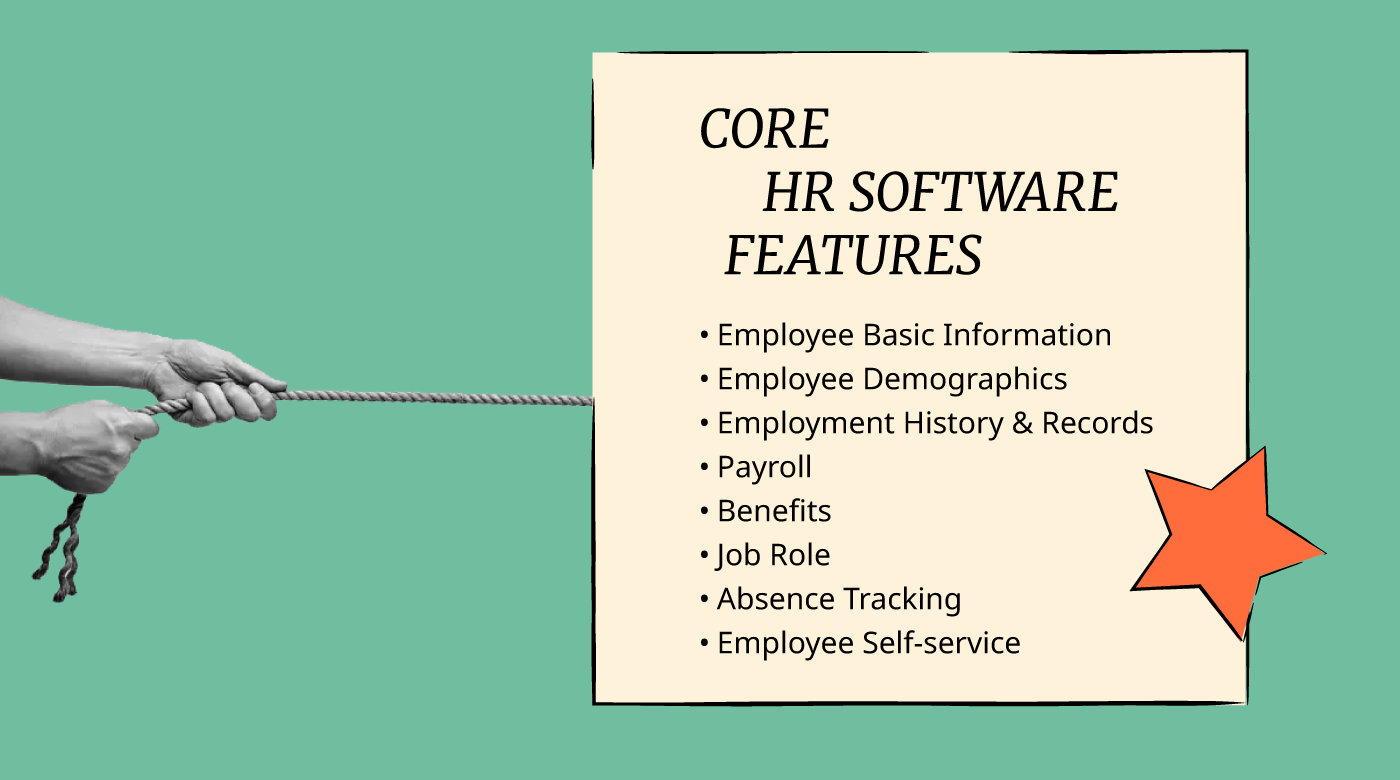
Features HR Software
To help you ensure you're on the right track, I've outlined the most important HR features to consider when selecting a new HR software system:
- Employee self-service abilities: This feature allows your employees to manage their personal information, which can significantly reduce the volume of simple administrative requests your HR staff regularly receive.
- Payroll processing: This includes crucial tools to manage your payroll data, calculate taxes and deductions, run payroll, and complete direct deposits.
- Recruiting & applicant tracking: This includes features to screen candidates, schedule interviews, and submit job offers, including an integrated onboarding workflow to reduce administrative burdens for new hires.
- Analytics & reporting: You'll want to be able to run advanced reports on your HR data to uncover workforce trends, enhance strategic planning, and make better data-driven decisions.
- Compliance monitoring: This covers features that minimize legal risks related to paying employees and monitoring employee work hours to ensure they comply with labor laws and employment standards.
- Attendance & time-tracking: This covers tools that track the hours your employees work (including overtime), or whether they're absent from work. This can also include tools that allow your staff to swap shifts with other employees.
- Leave management features: Separate from time-tracking and attendance, these are tools that track and manage paid time off (PTO) requests, or other types of leave requests.
- Talent management capabilities: This covers a broad set of features to help you develop and upskill your workforce, including performance evaluations, learning management (such as an LMS), and internal training capabilities. Comprehensive systems may also offer features for succession planning too.
- Employee lifecycle management: These features can help you recruit new employees, manage the hiring process, and facilitate the onboarding process for new hires. Many platforms also have tools to support offboarding departing employees.
- Communication and collaboration tools: This includes features like in-app chat streams, tagging colleagues with @ mentions, individual task assignments, and file sharing.
- Software integrations: Connecting natively with other software systems you're already using will improve your team's productivity and help you work more efficiently. Key integrations to look for include email providers, digital calendars, job boards, work platforms like Google Workspace, project management tools, and any other tools you're already using.
Keep in mind that these features will vary depending on the specific type of human resources software you're looking for. If you'd like more specialty suggestions, pop down to my list below for other types of specialty HR software instead.
Benefits of HR Software
HR software is designed to make your human resource functions more efficient. By investing in modern HR software, you can reduce administrative burdens, make better data-driven decisions, and uncover actionable insights to help you strategically manage your workforce more effectively.
As you build your business case for a new HR software, you'll want to highlight the following benefits:
- Increased Efficiency: By automating routine tasks, HR software significantly reduces the time and effort required for administrative processes, giving your HR professionals more time to focus on other strategic tasks, such as talent management and employee engagement.
- Streamlined Data Management: HR software provides a centralized database for all employee information, making data management more secure and accessible. This centralized system ensures that employee records are kept up-to-date and can be accessed or updated by authorized personnel only, reducing the risk of data discrepancies and loss.
- Improved Compliance: HR software simplifies the process of keeping up with changing labor laws and regulations thanks to regular software updates. This helps organizations avoid potential legal issues by ensuring that their HR practices remain in compliance with all relevant laws and regulations.
- Data-Driven Decision Making: Thanks to built-in analytics and reporting tools, HR software offers insights into workforce trends and other HR metrics. These insights enable managers and HR professionals to make informed decisions regarding workforce management, talent acquisition, and retention strategies, ultimately leading to better organizational planning and performance.
- Enhanced Employee Experience: Most HR software offers employee self-service portals that empower employees to manage their personal information, submit time-off requests, and access their payroll and benefits information online. This level of autonomy improves the overall employee experience, leading to higher engagement and satisfaction levels.
By streamlining administrative tasks, improving data management and compliance, enabling informed decision-making, and enhancing the employee experience, HR software represents a valuable investment for businesses aiming to optimize their HR functions and drive organizational success.
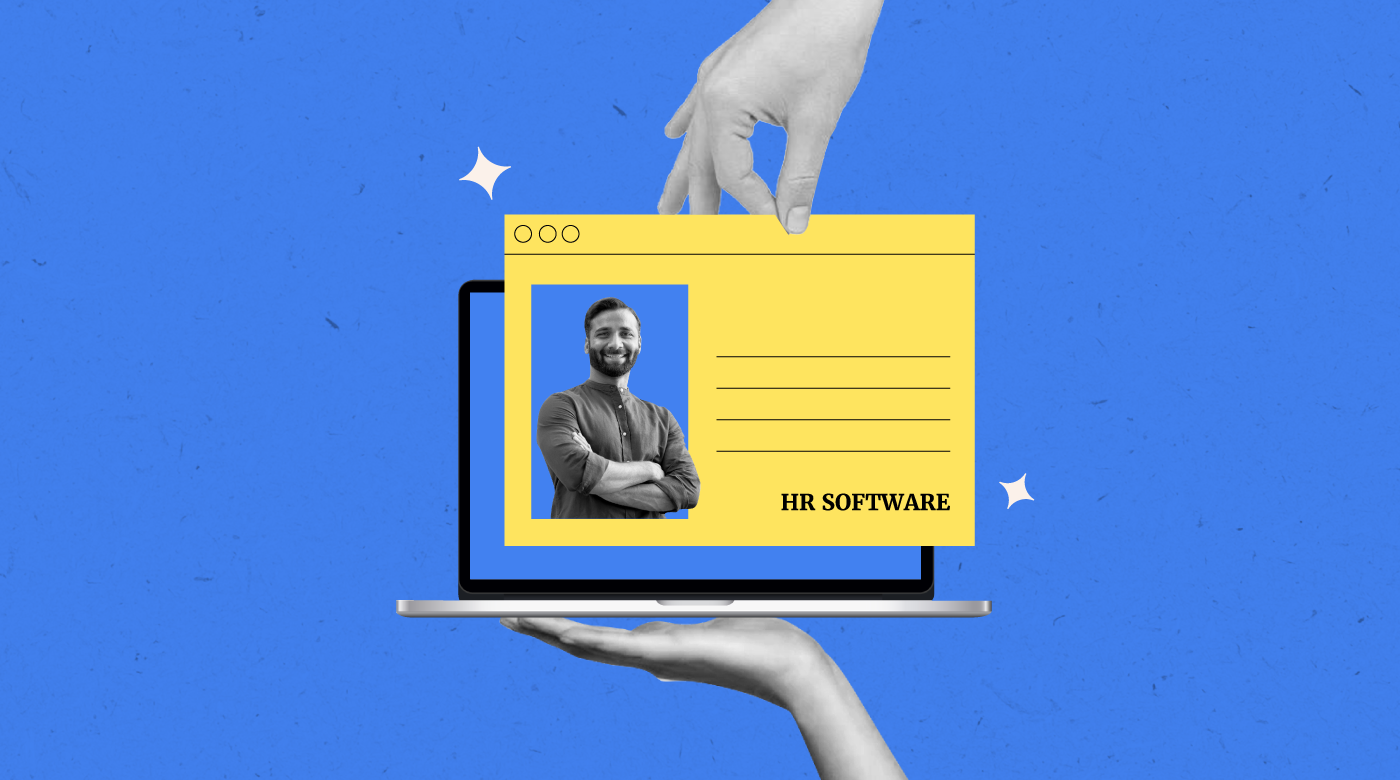
Costs & Pricing for HR Software
Something to look out for in any HR software solution is fair, transparent, and scalable pricing. Most providers offer different pricing tiers to cater to the needs of small businesses and startups, midsize businesses, and enterprise businesses.
You can expect to pay a monthly per-user fee for HR software under a SaaS (software-as-a-service) contract agreement. To give you a sense of the pricing landscape, I've compiled average prices for the most common HR software packages into the table below.
Plan Comparison Table for HR Software Solutions
| Plan Type | Average Price | Common Features Included |
|---|---|---|
| Free | $0 | Basic employee management, time-tracking, limited reporting, and access for a limited number of users |
| Basic | $2 - $8 per user/month | Employee self-service, leave management, basic reporting, and payroll abilities or integration |
| Professional | $8 - $15 per user/month | Performance management, benefits management, advanced reporting, and enhanced security features |
| Enterprise | Custom Pricing | Custom integrations, full-suite HR management, dedicated support, advanced analytics and reporting |
I always strive to choose software with transparent pricing models. However, sometimes those details are only available upon request due to the modular nature of their system. You can often still get a clear understanding of their different plan levels and the features that are included in each by visiting their websites.
If cost is your biggest factor, this article digs into the costs of HR software and how you can decide what's best for your company.
There’s always room for negotiation on HR software pricing. I always recommend trying to get a better deal based on your needs.
If you only have a small number of employees, you can likely get started with a free or basic plan initially. However, there are several reasons why you may want to opt for a more advanced plan, including:
- Employee Count Increase: Many basic plans have limitations on the number of employees you can manage. As your employee headcount grows, you'll need to scale up to a plan that can accommodate more users and offer more extensive features and better scalability.
- Multiple Locations: If your organization has multiple locations, or is poised for future expansion, a basic plan won't suit your needs for long. Advanced HR software typically offers multi-location support to make this process easier.
- Automation of Processes: Basic plans generally don't include automation tools. However, advanced HR software can automate repetitive tasks such as onboarding, offboarding, performance reviews, and time-off requests, freeing your HR staff up to focus on other strategic initiatives.
- Data Analytics and Reporting: Upgraded plans often include advanced analytics and reporting capabilities, providing insights into workforce trends, employee performance, and other key metrics.
- Tailored Solutions: If you want a solution that's tailored to your specific needs, you'll need to scale up to an advanced software plan. Higher-priced plans offer greater customization capabilities to accommodate industry-specific requirements or unique organizational structures.
By upgrading to a more advanced HR software plan, companies can better manage their growing workforce, streamline HR processes, enhance employee experience, and ensure compliance with legal and regulatory requirements, ultimately contributing to overall organizational efficiency and success.
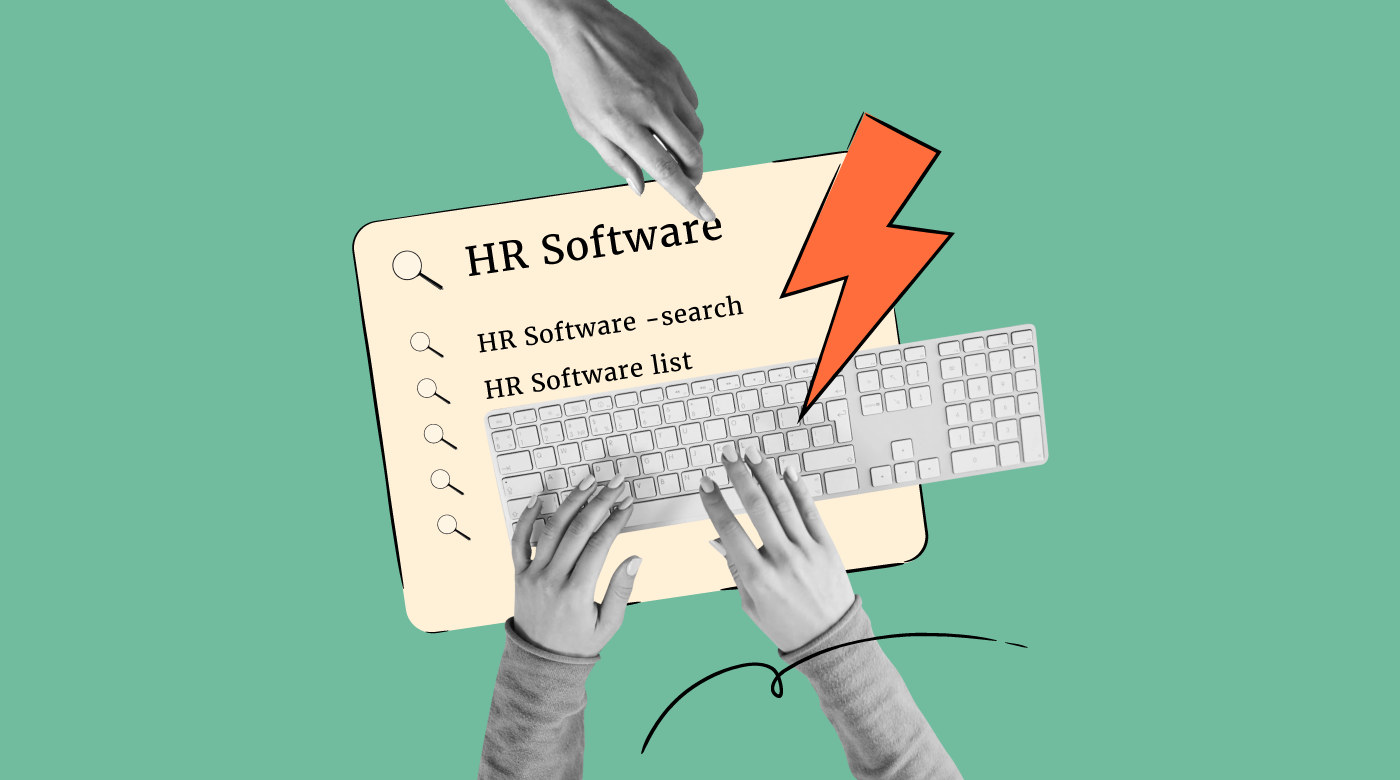
Types of HR Software
HR software is quite a broad category with many different sub-types. However, when people refer to HR software generally, they are usually thinking of an HRIS, HCM, or HRMS system.
- A Human Resource Information System (HRIS) is the most basic form of HR database that stores employee information and contains modules for basic HR functions (e.g., time-tracking, benefits, and sometimes (but not always!) payroll).
- A Human Resource Management System (HRMS) goes beyond basic functions to add additional modules for higher-level tasks, such as recruiting or applicant tracking, performance management, and employee engagement.
- Lastly, a Human Capital Management [System] (HCM system) usually offers a slightly broader set of modules than an HRMS (though not always), often with a more strategic focus on workforce planning. As a result, these human resources systems are more likely to include features for employee scheduling or native integrations with enterprise resource planning software (ERP software).
When it comes to price, an HRIS is the most affordable option, with HCM and HRMS priced higher, often with enterprise-level HR software features and pricing upon request. Since many HR software companies use these terms interchangeably, it's important to focus on the features you actually need, rather than the nomenclature the software commonly goes by.
Other Sub-Types of HR Software
There are more sub-types of HR software beyond just the core HR software types noted above. For example, the following HR management software sub-types are aimed at specific users or functions:
- HR Software for Small Business
- HR Software for Payroll
- HR Software for Onboarding
- Open Source HR Software
- HR Tracking Software
- HR Software Applications / Apps
Recruitment Tools
These are the most popular types of recruiting software for sourcing and screening candidates, integrating more diverse candidates, dealing with large volumes of applications, and conducting video interviews:
- Applicant Tracking Systems (ATS)
- Enterprise Recruitment Software
- Diversity Recruiting Software for DEI Hiring
- Video Interviewing Platforms
- HR CRM Software
- Cloud Recruiting Software
Employee Performance
Performance management software will help your staff to reach their full potential and add much-needed structure to their long-term development plans:
Employee Engagement
If you're looking for ways to motivate and celebrate your staff, employee engagement and recognition software is what you need:
Scheduling & Time Tracking
Scheduling and time-tracking software are essential tools for any hourly-based workforce. These types of HR employee management software will help you create shift schedules and track time off requests with ease:
- Attendance Tracking Software
- Employee Shift Scheduling Software
- Leave Management Software
- Online Employee Scheduling Software
Payroll & Accounting Solutions
Here are my lists of the payroll software and companies out there, plus my top choices for expense reporting:
- Payroll Software for 1 Employee
- Payroll Companies
- HR and Accounting Software
- Expense Reporting Software
Benefits Management & Compensation
Employees care fiercely about their benefits, so you should always handle these with care. These types of HR software tools simplify the enrolment and management process for you and help you offer non-monetary perks as well:
Resource Management Software
If you're looking for software to help you manage your resources — including your human resources, and physical resources like inventory and equipment — these types of resource management software may be a better fit:
HR Software: Frequently Asked Questions
Here are some commonly asked questions and answers about software HR and how it can help you streamline your business processes.
How can I ensure smooth data migration to new HR software?
You can ensure smooth data migration by planning ahead, cleaning existing records, and choosing an HR software vendor with proven migration support. Work with your IT team to map fields, set timelines, and run test transfers before a full launch. You should also ask your vendor about assisted migration services and post-migration data checks so nothing gets lost or corrupted.
What integrations should I prioritize when selecting HR software?
You should prioritize integrations with payroll, time tracking, accounting software, and applicant tracking systems. If your company uses tools like Microsoft 365, Slack, or job boards, confirm the HR software connects with those too. Fully-functional integrations help prevent duplicate data entry and save time for your HR team.
How do I measure ROI on HR software?
You can measure ROI on HR software by tracking time savings, reduction in manual errors, improved compliance, and lower HR admin costs. Compare pre-implementation metrics (like onboarding time or payroll errors) to post-implementation data. Also consider employee feedback and increased process transparency when assessing value.
How do HR platforms manage data security?
Most HR platforms manage data security through a range of features and approaches, including:
- Data encryption for in transit and at rest data
- Secure cloud storage
- Regular security audits
- Compliance with international standards like GDPR and ISO/IEC 27001
- Detailed access controls to prevent unauthorized access
- Two-factor authentication
- Single sign-on
You should also check if your vendor is certified (like SOC 2 or ISO 27001), and ask about secure data backup and recovery plans. Make sure your HR team sets strong internal user permissions, too.
What are the average implementation times for HR software?
Implementation times for HR software typically range from a few weeks to several months, depending on your company’s size and the system’s complexity. Small businesses often go live in 2-4 weeks, while larger organizations might take 2-6 months. For HR systems that include payroll functionalities, the implementation process needs to accommodate running payroll in parallel for several pay periods too.
To help you plan accordingly, ask your vendor for a clear implementation timeline and key project milestones.
Are there sub-types of HR software for different business types?
Yes, different types of HR software are built for businesses of all sizes and industries. Some focus on essentials like payroll and time-off tracking, while others offer advanced analytics, performance management, or compliance for certain sectors.
The three main types of HR software most people search for are known as HRIS, HCM and HRMS. Essentially, they are all synonyms for different levels of HR management tools. Within each of these types, there are HR software companies out there that have catered their software to solve particular pain points that are unique to each industry.
Here are some examples:
- HR software for healthcare is designed to ensure compliance with strict regulations like HIPAA, while streamlining operations that are crucial for healthcare organizations, such as scheduling employees, reducing staff burnout, managing high turnover, and verifying applicant credentials before hiring.
- HR software for law firms is built to help teams safeguard data and maintain compliance, while also providing a framework for managing sensitive legal documents and tracking billable vs non-billable hours in order to easily bill clients for time worked.
- HR software for accountants is designed to support both workforce and financial management tasks. This means these systems come with strong financial components such as time tracking, invoicing and billing, and payroll and tax management features. They are also designed to mesh with accounting standards, such as GAAP or IFRS.
What's the best HR software for Canadian businesses?
If you’re operating in Canada, choosing a homegrown HR solution just makes sense. Canadian-made software is built with local labor laws and CRA requirements in mind—helping you stay compliant without the guesswork.
But it’s not just about compliance. Here’s why Canadian companies benefit from Canadian HR software:
-
Bilingual support in English and French is more readily available.
-
Payroll features are tailored to Canadian regulations and tax structures.
-
Built-in cultural relevance, like statutory holidays and provincial standards.
-
Integration with local benefits like healthcare and RRSPs.
-
Deeper market insight—Canadian providers know your landscape.
-
Local support teams, and sometimes even in-person meetings if you’re near a major city (how Canadian is that?).
If that sounds like the right fit, you’re in luck—I’ve already rounded up the top HR systems developed by Canadians, for Canadians. Check out my curated list of the best Canadian HR software to find the one that meets your needs, or my list of the best Canadian payroll systems if payroll is all you’re looking for.
What HR software is best for startups?
The best HR software for startups is scalable, easy to use, and budget-friendly—so you can hit the ground running without overcomplicating your workflow. Most startups lean toward cloud-based tools thanks to their lower upfront costs, flexible access, and faster setup.
Startups should prioritize platforms that cover the essentials: recruitment, onboarding, payroll, performance tracking, and responsive support when things get busy. Look for solutions with modular features or pay-as-you-grow pricing so your software evolves as your team grows.
Not sure where to begin? Start with our curated list of the best HR software for startups, which was created with growing teams in mind.
What's the best HR software for managing an international team?
If you’re managing a global workforce, the best HR software combines tech with international HR expertise—helping you stay compliant across borders while supporting your team wherever they are.
Look for platforms that include or integrate with global payroll services (to manage multi-currency payments) and employer of record (EOR) services, which legally hire international employees on your behalf. These solutions take the complexity out of cross-border hiring, tax compliance, and local labor laws.
In short, international HR software isn’t just about features—it’s about access to the right services and support to confidently grow your team worldwide.
What's the difference between cloud and on-premise HR software, and which is better?
The key difference comes down to where the software lives:
-
Cloud-based HR software is hosted online and accessed through a browser—perfect for remote teams, automatic updates, and lower upfront costs.
-
On-premise HR software is installed directly on your company’s servers, giving you full control over your data, but requiring more investment in IT infrastructure and ongoing maintenance.
So, which one’s better? That depends on your organization’s needs:
-
Choose cloud-based software if you want something cost-effective, easy to scale, accessible from anywhere, and light on IT overhead.
-
Go with on-premise software if you’re in a highly regulated industry, need to tightly control your data, or have an in-house IT team that can handle updates and customization.
In general, small to mid-sized businesses tend to prefer cloud-based HR systems, while larger enterprises with stricter security protocols often opt for on-premise solutions.
Final Thoughts
Choosing the right HR software can significantly improve your HR department’s efficiency by automating key tasks, ensuring compliance, and enhancing your employee experience.
When selecting a new system, or upgrading existing HR software, talk to your different user groups first to make sure you understand all the challenges your team is facing. Then, focus on software that satisfies all your needs and desired outcomes to avoid wasting time and resources.
Whether you're looking to streamline payroll, recruitment, or performance management, there's a variety of HR software solutions available to fit businesses of every size.
Ultimately, the right HR software must align with your goals, budget, and technical requirements in order to drive better organizational performance.
Stay in Touch
If you found this list of the top HR systems helpful, please stay in touch! Consider subscribing to our weekly People Managing People newsletter to stay up-to-date on our latest podcasts, how-to guides, best practices, and, of course, more software recommendations.



